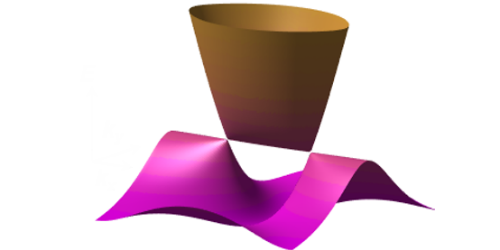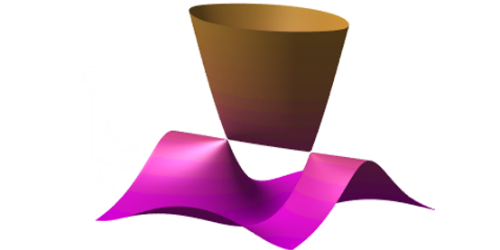Topological Behavior Spotted in Photonic Systems
Because of unusual electronic band structures, some materials, such as graphene, can give rise to topological states of matter—exotic quantum states impervious to impurities and lattice deformations. This robustness makes these materials promising components of future quantum information devices, but it is difficult to manipulate the electrons to consistently produce topological states. Consequently, researchers have turned to photonic materials, such as silicon and other semiconductors, where topological states arise from the band structure of quasiparticles that are more easily tamed. Now, two independent groups have engineered two types of photonic materials to observe new topological phases and related behavior.
Sunil Mittal of the University of Maryland in College Park and collaborators observed topological states in a photonic chip, which consists of a grid of interlocked, micrometer-scale silicon rings. By shining light into the rings, the team found that light at wavelengths of around 1550 nm stays confined to the rings on the edge of the chip, whereas other wavelengths hop from ring to ring throughout the bulk of the material. These “edge states” are a photonic analog of the states seen in a topological insulator, in which electrons are confined to the edge of the material. Unlike some commonly observed edge states, this photonic version occurs without an applied magnetic field.
Another team led by Alberto Amo of the University of Lille in France engineered a photonic analog of graphene by etching microscopic pillars into a semiconductor. Arranged in a honeycomb pattern, these pillars allow the material to sustain light-matter quasiparticles known as polaritons. By compressing or stretching the honeycomb lattice, the team engineered the polariton band structure into geometries known as Dirac cones, which are associated with topological states. In particular, they engineered the material to have the first-ever Type-III Dirac cone, a band structure theoretically predicted to increase the superconducting critical temperature in some materials.
This research is published in Physical Review Letters and Physical Review X.
–Sophia Chen
Sophia Chen is a science writer based in Tucson, Arizona.





